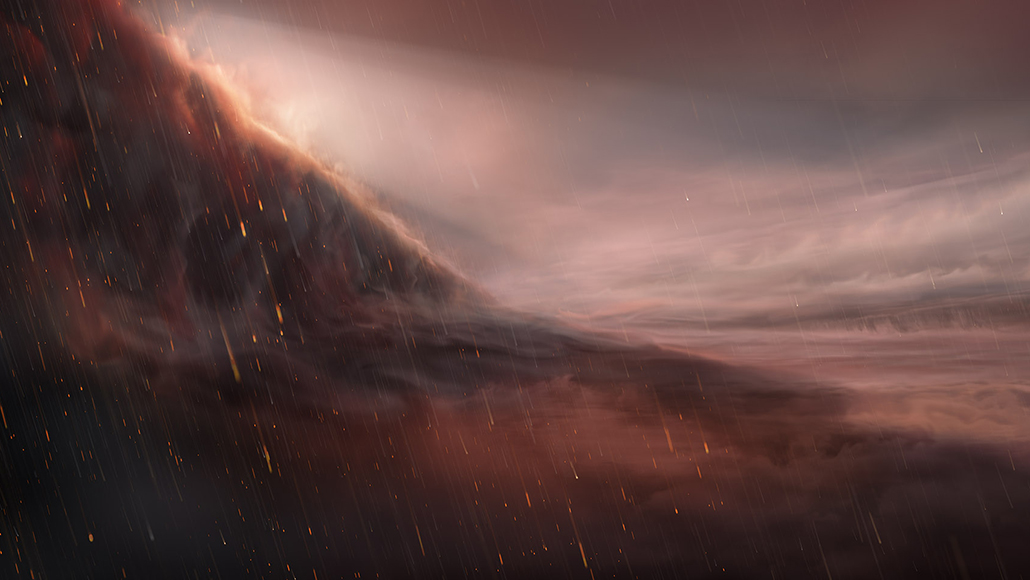Heavy metal may rain from the skies of planet WASP 76b
Astronomers observed evidence of iron rain on the ultrahot gas giant

To be rain ready on WASP 76b, you’d probably need to pack more than an umbrella. This extreme exoplanet’s showers appear to consist of iron raindrops, as seen in this illustration.
M. Kornmesser/ESO







